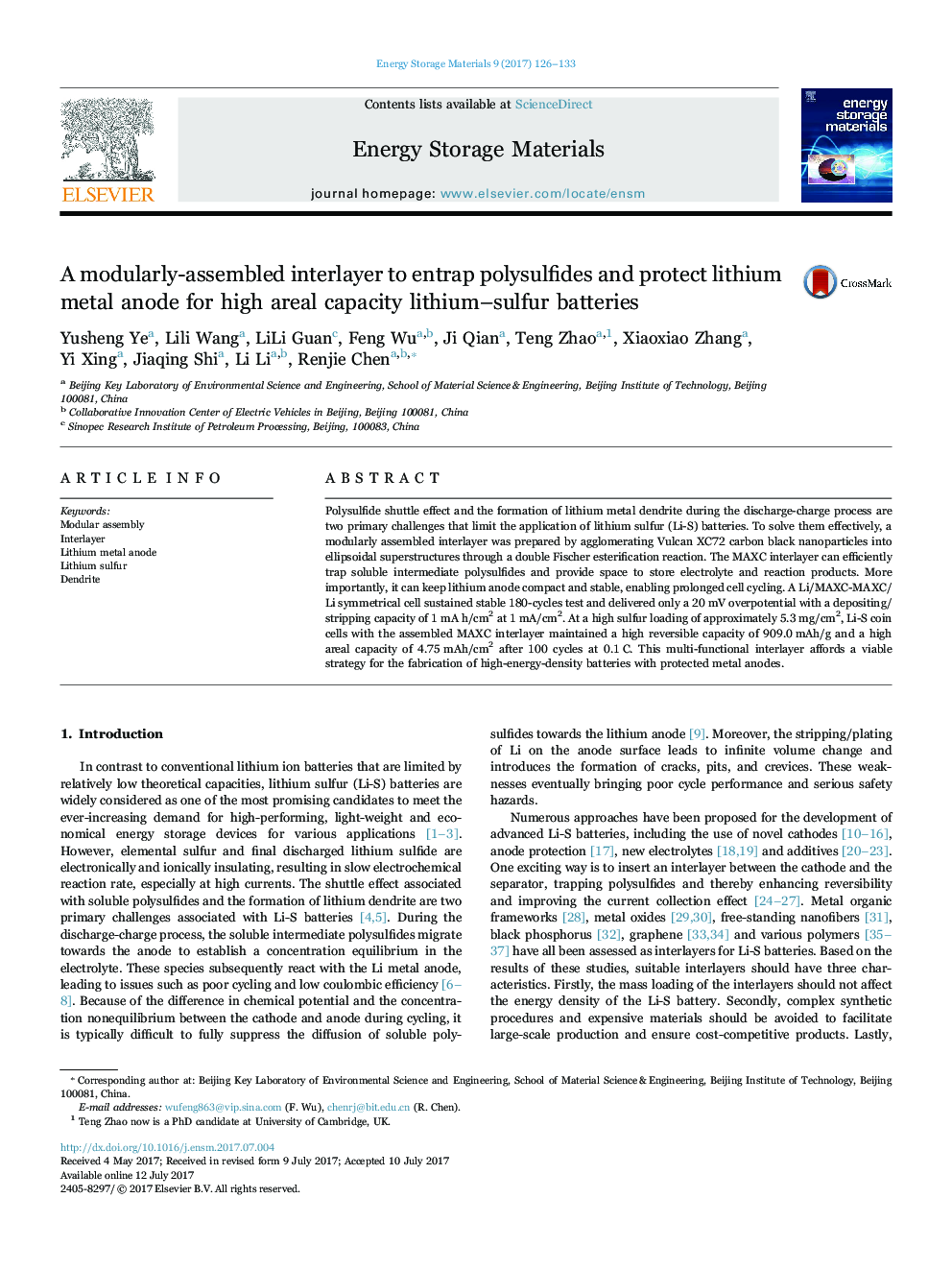| کد مقاله | کد نشریه | سال انتشار | مقاله انگلیسی | نسخه تمام متن |
|---|---|---|---|---|
| 5453777 | 1513992 | 2017 | 8 صفحه PDF | دانلود رایگان |
Polysulfide shuttle effect and the formation of lithium metal dendrite during the discharge-charge process are two primary challenges that limit the application of lithium sulfur (Li-S) batteries. To solve them effectively, a modularly assembled interlayer was prepared by agglomerating Vulcan XC72 carbon black nanoparticles into ellipsoidal superstructures through a double Fischer esterification reaction. The MAXC interlayer can efficiently trap soluble intermediate polysulfides and provide space to store electrolyte and reaction products. More importantly, it can keep lithium anode compact and stable, enabling prolonged cell cycling. A Li/MAXC-MAXC/Li symmetrical cell sustained stable 180-cycles test and delivered only a 20Â mV overpotential with a depositing/stripping capacity of 1Â mAÂ h/cm2 at 1Â mA/cm2. At a high sulfur loading of approximately 5.3Â mg/cm2, Li-S coin cells with the assembled MAXC interlayer maintained a high reversible capacity of 909.0Â mAh/g and a high areal capacity of 4.75Â mAh/cm2 after 100 cycles at 0.1Â C. This multi-functional interlayer affords a viable strategy for the fabrication of high-energy-density batteries with protected metal anodes.
The modular assembly of Vulcan XC72 nanoparticles to superstructure offers a predominant strategy to modify materials with new physicochemical functionalities. A modularly-assembled ellipsoidal-like superstructure was designed through a double “Fischer esterifications” and be used as an interlayer for high-areal-capacity lithium sulfur batteries. The obtained modularly assembled interlayer worked “hand-in-hand” between nanoparticles, efficiently trapped soluble intermediate polysulfides and provided the space to store electrolyte/products for long cell cycling.368
Journal: Energy Storage Materials - Volume 9, October 2017, Pages 126-133
